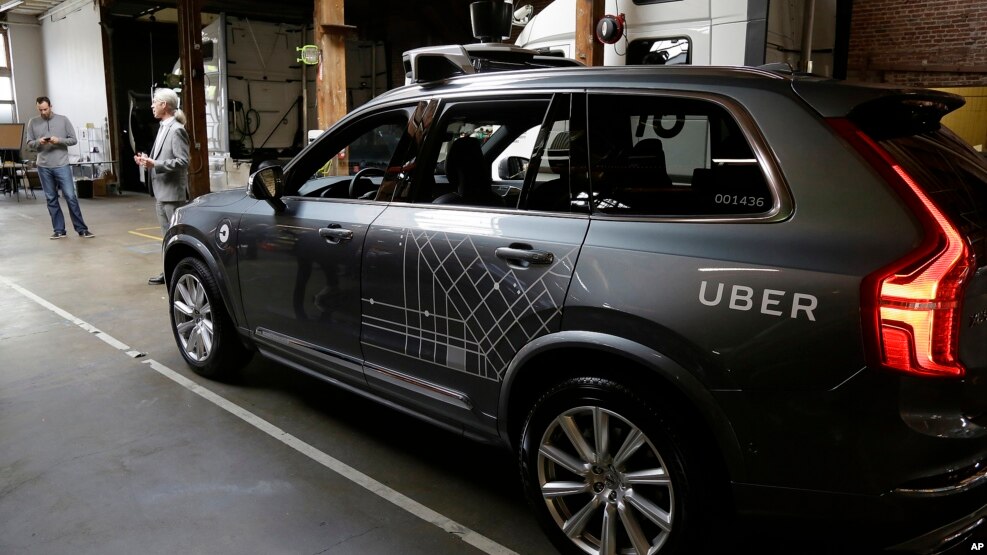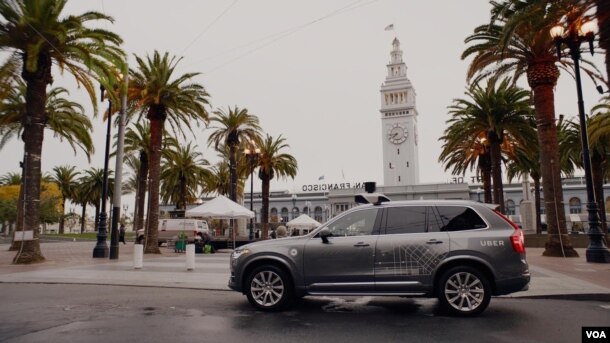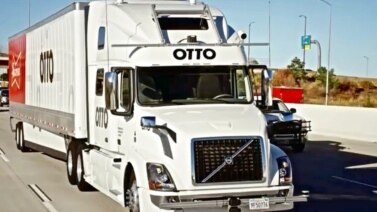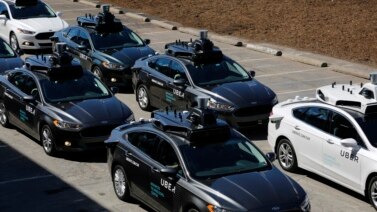
The ride-sharing company Uber has removed its self-driving cars from the streets of San Francisco, California.
The action came after a dispute between Uber and state officials over whether the vehicles needed special permits to operate.
Uber recently launched testing of its self-driving service in San Francisco.
But shortly after the launch, California's Department of Motor Vehicles (DMV) told the company to stop the self-driving vehicles. State officials said the Uber cars needed the same special permit given to about 20 other companies testing self-driving technology in California.

But Uber refused to obey and kept its cars on the road in San Francisco. The company, which operates a transportation network around the world, is based in San Francisco. Uber argued that its technology does not make vehicles fully autonomous, and so the special permit was not needed.
It added that all of Uber's “self-driving” cars have a driver sitting in the passenger seat to take over if needed.
The head of Uber's self-driving technology, Anthony Levandowski, explained the company's position in a blog post. He said the self-driving Uber vehicles do use high-technology tools to assist drivers. But, they are not fully autonomous and require a driver to be at the controls at all times.
He compared the technology to solar carmaker Tesla's advanced driver assist tools. Telsa's Autopilot system allows its cars to steer in a lane, change lanes, and speed up or slow down based on nearby traffic. The company tells drivers that, when using Autopilot, they should still always be ready to take control of the vehicle.
Vehicles equipped with these high-tech driver assist tools do not need a special permit to operate in California.
“It's hard to understand why the DMV would seek to require self-driving Ubers to get permits when it accepts that Tesla's autopilot technology does not need them,” Levandowski wrote. “We asked for clarification as to specifically what is different about our tech from the DMV, but have not received it.”
Uber and state officials were not able to come to an agreement on the issue. On Wednesday, the DMV said it had canceled the registration of Uber's 16 self-driving cars in San Francisco. All U.S. vehicles driven on the road require state registration.
In September, Uber got its first U.S. approval to test self-driving vehicles in the city of Pittsburgh, Pennsylvania. Uber continues to test the cars and give people the chance to experience the technology.
San Francisco's mayor, Ed Lee, praised the DMV for stopping Uber's self-driving vehicles. He said he supports self-driving development and testing. “But only under conditions that put human, bicyclists' and pedestrian safety first.”
There were several reports of unsafe incidents involving Uber's self-driving vehicles in San Francisco. Most involved witnesses claiming they saw Uber vehicles not stopping for red lights.
Video of one incident was posted online that appeared to show a self-driving Uber car passing through a red light. Another person posted a photo of what she said was an Uber self-driving car in the road that did not stop for a red traffic light.
Just passed a 'self-driving' Uber that lurched into the intersection on Van Ness, on a red, nearly hitting my Lyft.
— Annie Gaus (@AnnieGaus) December 14, 2016
In response, Uber said the video of the incident showed why its cars always require close attention from a human driver - and therefore do not need a state permit.
Uber announced it would send the self-driving vehicles to the neighboring state of Arizona to begin a new test project there. Arizona Governor Doug Ducey reportedly said the state welcomed the cars with “open arms” and “wide open roads.”
I'm Bryan Lynn.
Bryan Lynn wrote this story for VOA Learning English, with additional material from VOA News, the Associated Press and Reuters. Mario Ritter was the editor.
We want to hear from you. Write to us in the Comments section, and visit our Facebook page.
Words in This Story
autonomous - adj. independent, existing separately from other things
advanced - adj. at a higher, more difficult level
lane - n. part of a road marked for the single passage of vehicles
clarification - n. an explanation of something to make it clearer
pedestrian - n. a person walking on a sidewalk, road, etc.


